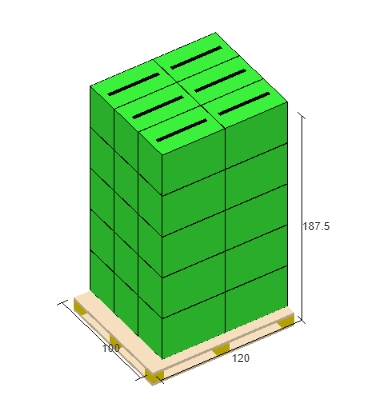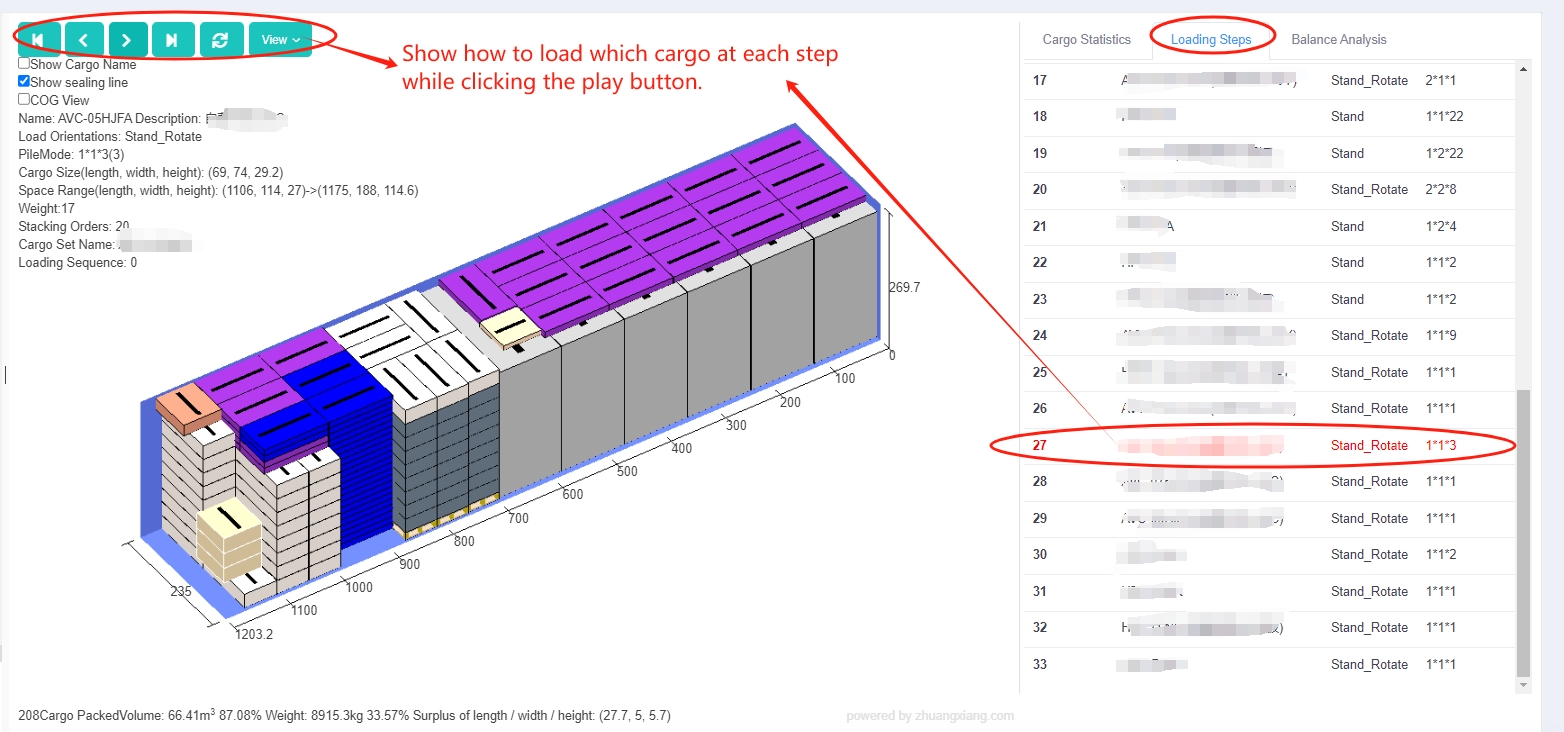Spending as little as possible to make profit as much as possible is the final goal of each enterprise. Then elevating the work efficiency at different stages and decreasing labor costs with the help of a powerful load planning software is gradually becoming a common choice for many enterprises. But how does such a software help improve the efficiency and decrease costs? Let’s see how LoadMaster load planning software has helped Hisense Hitachi export division.
The container loading requirements of Hisense Hitachi products are very complex, which are mainly reflected in the following points.
1.The SKU is in a large amount, sometimes an order involves more than 60 SKUs.
2.Most SKUs need to be palletized, and some do not need to be palletized. There are various kinds of pallet types available to choose.
3.There is a need to calculate how to mix palletized products and unpalletized products in one container.
4.In the palletizing process, some specified cartons are required to be loaded on specified pallets.
5.When palletizing, it is required to try to put the same SKU on one pallet. Only when the same SKU is not sufficient to load a pallet can it be palletized with other SKUs.
6.When palletizing, the loading/bearing capacity of different SKUs should also be considered. Some SKUs are sensitive to pressure, and others are not, which defines whether they can be loaded with other cargoes placed above them.
7.The load planning software is required to help users automatically calculate how many pallets and containers will be used, and what types of pallets and containers will be used.
8.There should be clear step-by-step diagrams for palletizing and loading containers to help guide warehouse staff on site and improve work efficiency.
Such complex container loading requirements are very difficult to meet solely by relying on manual calculations and drawings. In usual cases, it takes 30 minutes to calculate how to load a container. When the order volume is large during the peak season, it takes several hours just to calculate the container loading plan. And it becomes worse when the customer adjusts the SKU and the quantity because the entire load plan will need to be overturned and recalculated, which is very hard and time-consuming! So Mr. Deng from the Hisense Hitachi Export Division tried out various load planning software online and finally chose LoadMaster. Not only is LoadMaster easy to use but it can help enterprises realize accurate loading and increase the container loading rate. Let’s take a look at how it has helped solve palletizing and container loading optimization problems.
1.Able to calculate what type of container to use and how many containers are needed for each order.
2.When palletizing multiple SKUs, single product pallets can be generated first.
3.Users can define which SKUs should be palletized and which should not. They can also define how to load the left products of the same SKU which is not sufficient to load one pallet. (eg.Directly loaded into containers? Or mixed with other SKUs on one pallet?)
 Two pieces of loading rules related to whether to allow cargoes directly loaded into containers.
Two pieces of loading rules related to whether to allow cargoes directly loaded into containers.
4.Users can define how to load a certain SKU on pallets by creating a single product package.
 A unit load pallet.
A unit load pallet.
 Different intermediate packing methods.
Different intermediate packing methods.
5.When palletizing, users can define that other types of items cannot stack on top of fragile items, and cargoes with different weight can be matched to load by setting Stacking Orders, which is a relative value. The larger the value, the stronger the load-bearing capacity and the lower will be the cargo placed in the container.

6.The clear 3D palletizing step diagram and container loading step diagram are helpful and efficient in guiding on-site loading operations.
 3d load plan can be displayed step by step in details.
3d load plan can be displayed step by step in details.
 Floor loading plan.
Floor loading plan.
After using LoadMaster for half a year, Mr. Deng said that their work efficiency has been effectively improved. Now they only need to import the container shipping order, select commonly used pallets and containers, and the software can automatically calculate how many containers are needed, and the on-site container loading effect is also good. Moreover, nowadays their customers are paying more and more attention to the packing volume of containers. Compared with the manually designed loading plans in the past, the 3D container loading diagram of LoadMaster is more intuitive and clear for customers, greatly improving the customers’ satisfaction.
Do you want to optimize the order management process and decrease unnecessary costs? Give LoadMaster a chance to help you achieve that dream!